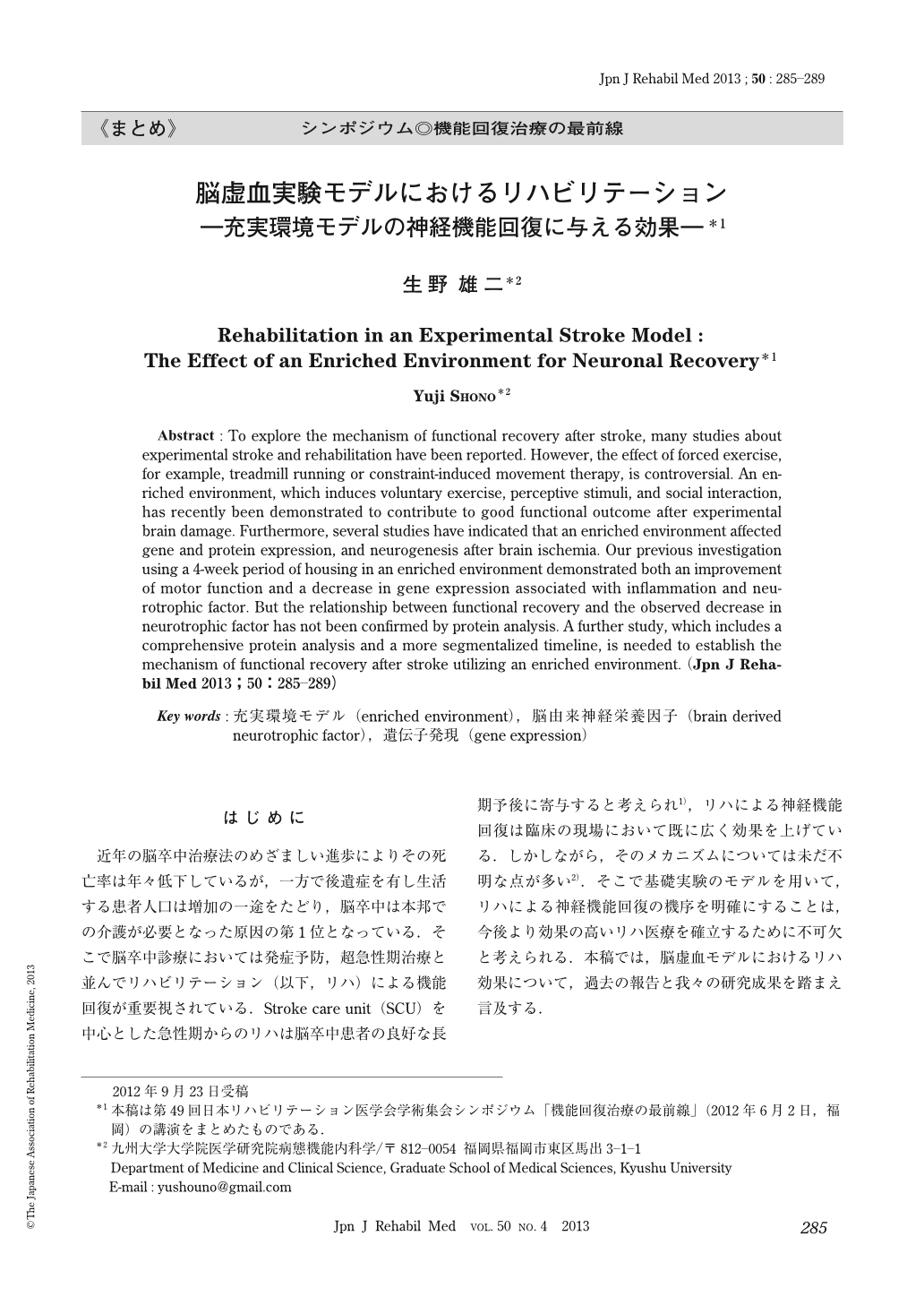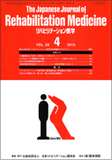Japanese
English
- 販売していません
- Abstract 文献概要
- 1ページ目 Look Inside
- 参考文献 Reference
はじめに
近年の脳卒中治療法のめざましい進歩によりその死亡率は年々低下しているが,一方で後遺症を有し生活する患者人口は増加の一途をたどり,脳卒中は本邦での介護が必要となった原因の第1位となっている.そこで脳卒中診療においては発症予防,超急性期治療と並んでリハビリテーション(以下,リハ)による機能回復が重要視されている.Stroke care unit(SCU)を中心とした急性期からのリハは脳卒中患者の良好な長期予後に寄与すると考えられ1),リハによる神経機能回復は臨床の現場において既に広く効果を上げている.しかしながら,そのメカニズムについては未だ不明な点が多い2).そこで基礎実験のモデルを用いて,リハによる神経機能回復の機序を明確にすることは,今後より効果の高いリハ医療を確立するために不可欠と考えられる.本稿では,脳虚血モデルにおけるリハ効果について,過去の報告と我々の研究成果を踏まえ言及する.
Abstract : To explore the mechanism of functional recovery after stroke, many studies about experimental stroke and rehabilitation have been reported. However, the effect of forced exercise, for example, treadmill running or constraint-induced movement therapy, is controversial. An enriched environment, which induces voluntary exercise, perceptive stimuli, and social interaction, has recently been demonstrated to contribute to good functional outcome after experimental brain damage. Furthermore, several studies have indicated that an enriched environment affected gene and protein expression, and neurogenesis after brain ischemia. Our previous investigation using a 4-week period of housing in an enriched environment demonstrated both an improvement of motor function and a decrease in gene expression associated with inflammation and neurotrophic factor. But the relationship between functional recovery and the observed decrease in neurotrophic factor has not been confirmed by protein analysis. A further study, which includes a comprehensive protein analysis and a more segmentalized timeline, is needed to establish the mechanism of functional recovery after stroke utilizing an enriched environment.

Copyright © 2013, The Japanese Association of Rehabilitation Medicine. All rights reserved.


